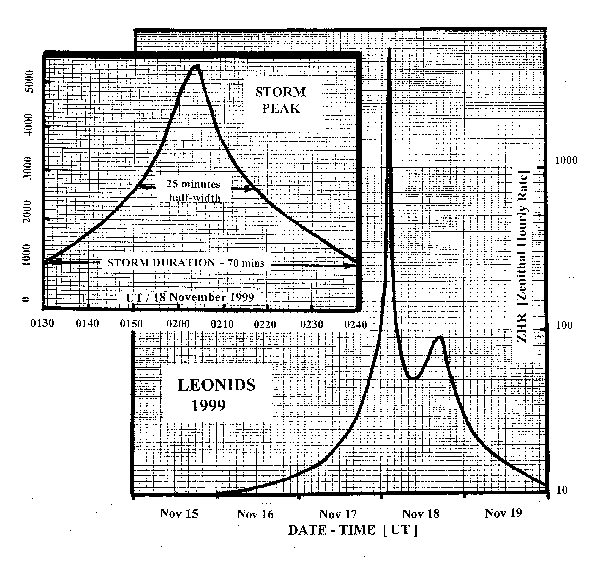The 1999 Leonid Meteor Storm
The Leonid meteor shower of 1999 started off with rates lower than those observed in previous years. However, late on the 17th and in the early hours of the 18th (UT), rates rose to a spectacular peak of around 5400 (corrected Zenithal Hourly Rate). The main graph below shows, on a logarithmic scale, the time history, over 5 days, of the Leonid shower. It was drawn using preliminary International Meteor Organisation data and supplemented by data taken at Learmonth in Western Australia.
Meteor rates rose above 1000 ZHR (the traditional definition of a meteor storm) for a period of 70 minutes from 0130 to 0240 (UT) on the 18th. The central peak of the storm is shown in detail in the inset graph drawn below using a linear scale. This also shows that the half width of the storm was around 25 minutes. Note also a much smaller secondary maximum at around 18/1600 UT.
As in 1998, it was observers in Europe who were best placed to observe the Leonids' peak outburst this year. It was noted that fainter meteors formed a greater percentage of the total population than they did in the previous three years. The percentage of long duration trains was also less than in previous years. One observer reported counting 55 meteors per minute around the peak time of 0205 UT.

Material prepared by John Kennewell






